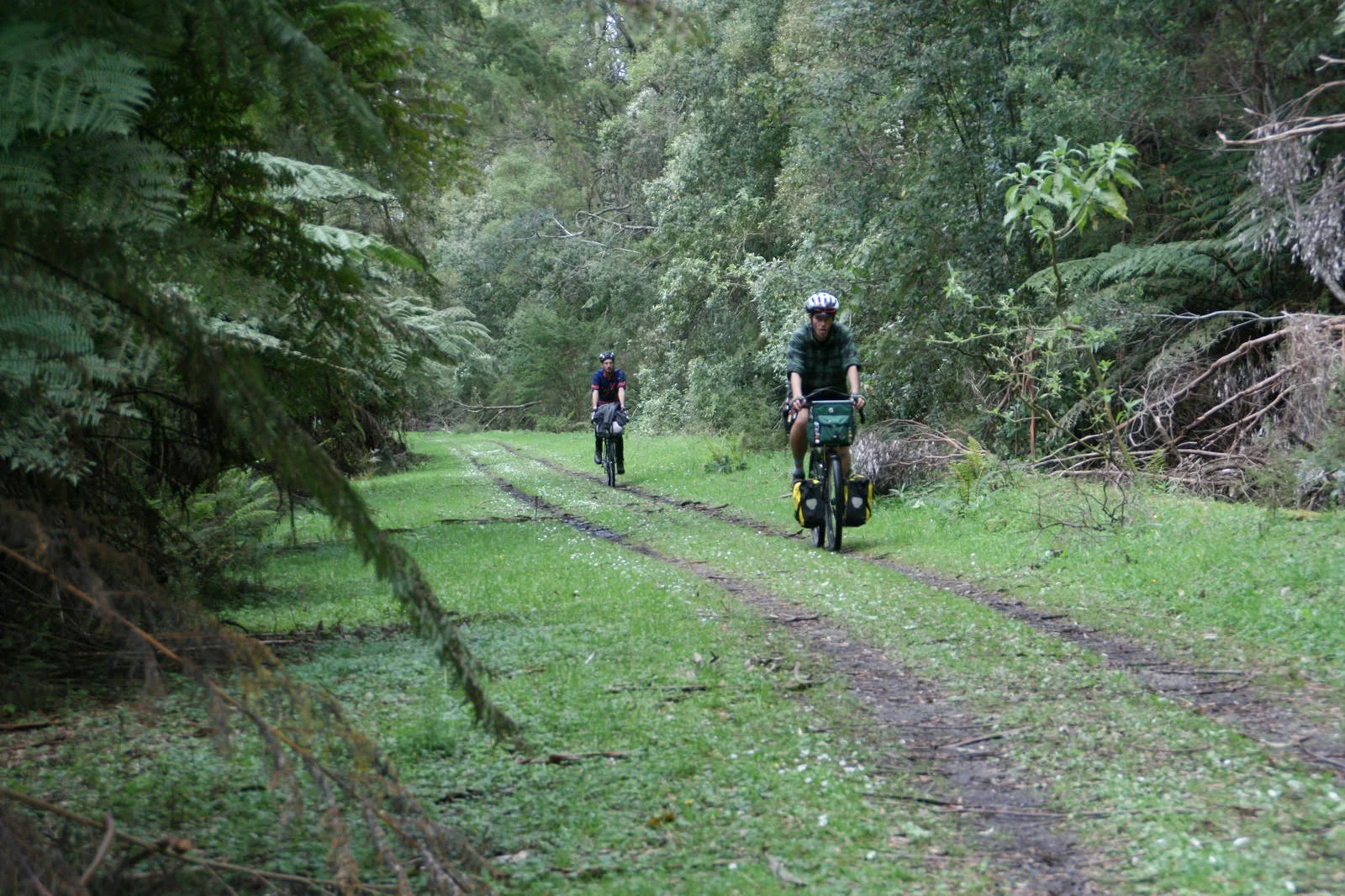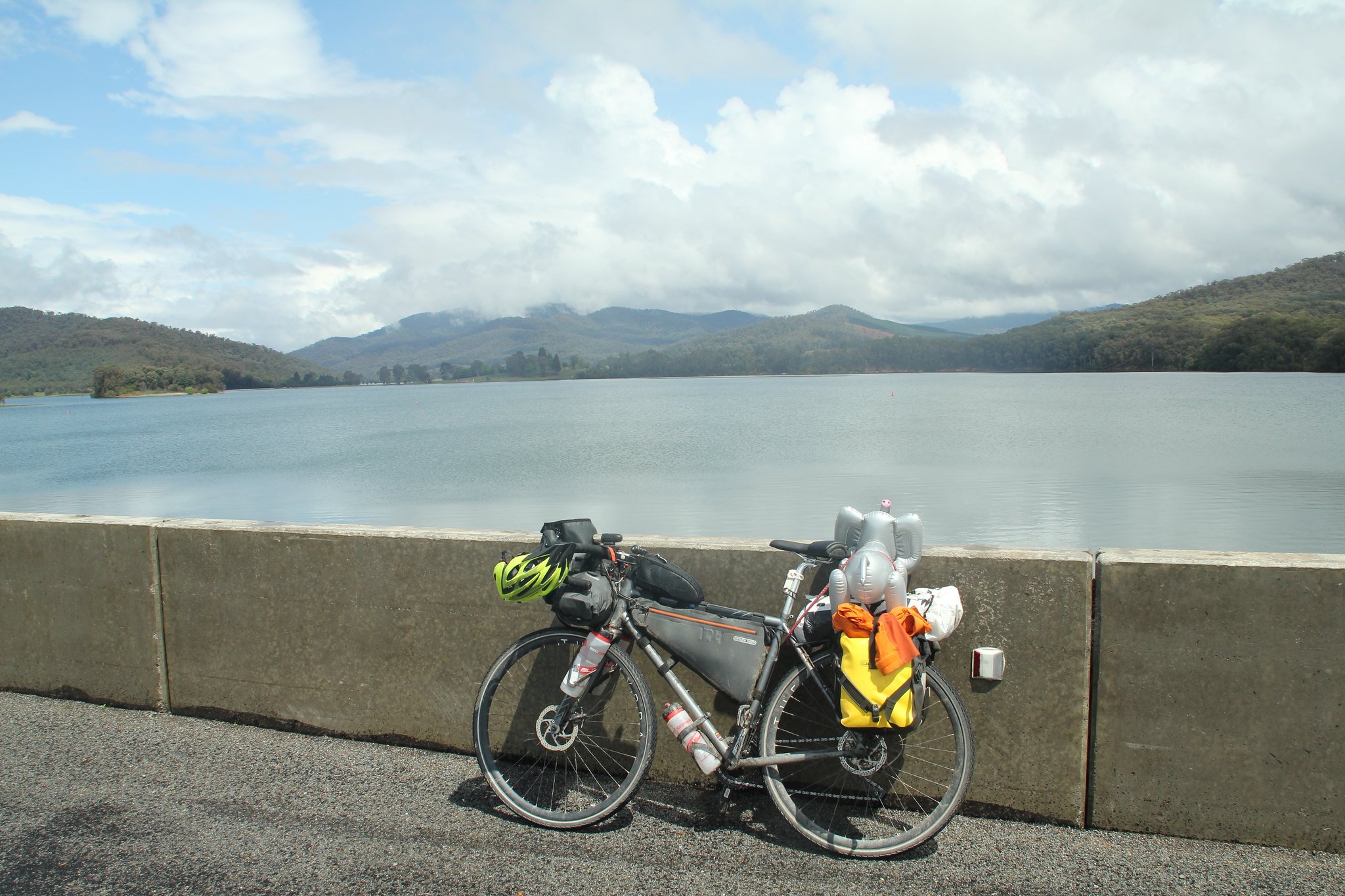A budget gravel drivetrain
/Bikes are getting more expensive. Parts are getting more expensive. Everything is getting more expensive (perhaps we are even entering a hyper-inflationary cycle that will upend the current economic order, but such speculation is beyond the scope of this humble blog). Maybe you’ve decided to stick with your old trusty for a few more years, or you’ve bought something second hand.
But many older gravel bikes, and some current cheaper ones, come with a ‘compact road’ crankset with a 50-34 chainring combination, which is typically matched to a not-particularly-wide-range cassette such as an 11-34. For most people, these are not the best gear ratios for gravel and adventure riding for a couple of reasons.
First, the smallest gear is not small enough. Unless you’re extremely fit, when tackling steep gravel roads, or a long climb with camping gear on board, you will find yourself grinding away in a large gear and getting fatigued quickly. Second, a typical ‘cruising gear’ for gravel riding often can only be achieved by ‘cross-chaining.’
cross chaining
Cross chaining is when the chain goes from the large chainring to a large rear cog, or the small chainring to a small rear cog. This increases the angle that the chain runs at, which reduces the efficiency of your drivetrain and the lifespan of the chain, cassette and chainrings. This means you’ll be paying for new drivetrain components more often, which is one of the biggest maintenance costs of a derailluer bicycle.
Fortunately, there is a way to address both of these problems that only requires replacing the consumable parts of your drivetrain (chain, cassette and chainrings). You need to replace these parts from time to time anyway, so this improvement represents no additional cost to the normal maintenance of your bicycle. You can even tell yourself (and significant others) that this effectively makes it free, the perfect justification for your out-of-control spending habits.
The first thing you might want to do is to get an idea of what is possible with your particular components. Lets start with the rear derailleur. I will use my own bike as an example here. On the underside of the derailleur you will find a part number (below left), in this case ‘RD-4700,’ which is the current Shimano Tiagra derailleur. If I plug ‘Shimano RD-4700’ into google, it will bring up the official Shimano product page which has a table of specifications (below right). The only wrinkle here is that there is a medium cage (GS) and a short cage (SS) version of this derailleur, for which the part number is the same, and you can only tell them apart visually. But if its either already working on a cassette that’s bigger than an 11-28, or if it’s on a gravel bike, it’s almost certainly the GS version.
deraialleur product code and table of specifications
The product specifications tell us that the ‘low sprocket max’ is 34 teeth, meaning that the largest cassette that ithe derailleur will work with is an 11-34. This bike already has an 11-34, so no joy there. What about the crankset? Can we simply replace the small chainring with a smaller ring? In this example we cannot because the ‘bolt circle diameter’ (BCD) of this bike’s crankset will not allow it. The crankset has a five-bolt 110BCD pattern, which is pretty common, and the smallest chainring this will allow is a 34 tooth small chainring. So where do we go from here?
It turns out that the low sprocket max is not a hard limit, but more what Shimano recommends for optimum shifting performance based on the angle that the derailleur sweeps across the cogs and therefore how close the upper jockey wheel stays to them. So we can use a larger cassette, but how much larger, and what might we need to do to make it work?
For guidance we can look at the ‘total capacity’ (aka maximum capacity) of the rear derailleur (see product specs above). This number has to do with the amount of chain slack the derailleur cage can take up. From the spec sheet we can see that the total capacity is 41 teeth, and by plugging it into the following equation we can determine what other changes we can make to the drivetrain.
Total Capacity—(number of teeth on the largest front chainring—number of teeth on the smallest front chainring)—(number of teeth on the largest rear cog—number of teeth on the smallest rear cog)
Let’s fill out this equation with the existing gear combinations on my bike just to help us wrap our head around it.
41—(50—34)—(34—11)=2
In theory, if the number we end up with is zero or above, the derailleur will take up enough chain slack, or have enough ‘capacity’ for that combination of chainrings and cassette to work. According to this, I should simply be able to use an 11-36 cassette with the existing chainrings, which would be an improvement. But the key take away here is that, if we reduce the size of the big chainring, it gives our rear derailleur more capacity to handle a wider range cassette. Also, reducing the size of the big chainring has the added benefit if reducing the need to cross-chain while in a cruising gear. Using this equation, I determined that if I dropped the big chainring to a 44 tooth, I should, in theory, be able to use an 11-42 cassette, which is massively bigger than an 11-34. Here’s what that equation looks like:
41-(44-34)-(42-11)=0
However I decided that I didn’t need a cassette that big for the kind of riding I did most, plus the wider gaps between gears might annoy me a bit, and there is a weight and cost penalty. What’s more, I discovered a niche French brand called TA that make a 33 tooth chainring in a five-bolt 110BCD pattern. I don’t know how, but through magical design and engineering they could squeeze one more tooth out of that small ring than anybody else, which meant I could make my lowest gear just that little bit lower, just low enough that I felt satisfied. TA make nice chainrings in general, and you are more likely to achieve a reliable shift when both chainrings are the same brand, so I matched the 33 tooth small chainring with a 44 tooth TA big ring, and combined these with an 11-36 cassette.
You can support this content by becoming a patron and making a small monthly donation.
I’ve been running this drivetrain for at least a couple of years now and I’m quite happy with it. My chainline when in a cruising gear is much better, and I don’t feel that I need any bigger gears than a 44 tooth chainring will allow. My smallest gear is now 24.2 gear inches or a ratio of 0.92, compared to the original 26.3 gear inches or a gear ratio of 1. It may seem a small difference, but it’s big enough when you’re on a long climb, and it takes the sting out of most situations I encounter. I don’t carry super heavy loads on this bike, nor do I tend to tackle super steep gnar that needs a real crawling gear. What’s more, the shifting has remained perfect, even though my low sprocket max is now outside the recommendations of Mr Shimano.
If your bike is equipped with a Shimano compact road crankset with Shimano’s unique asymmetric 4-bolt 110BCD pattern, there are even more chainring options potentially available to you. Absolute Black make ‘super compact’ asymmetric chainrings for these cranksets available in 48-32 and 46-30 combinations. They’re fairly pricey, but if you keep on top of your chain wear you can make chainrings last a long time.
Further notes when considering your own drivetrain modifications
I am basing this article on my own experience, on my own bike, using Shimano components. I am less familiar with how this might work on a SRAM equipped bike, but I feel that some of the same principles should hold. Whatever the case is, when going outside of spec, there are no guarantees that it will work, and when going a long way out of spec, like trying to make the derailleur in the above example work with and 11-42 cassette, even less is guaranteed (if anyone has tried this, let us know how it went in the comments section). And remember that you may have to adjust the ‘B-limit’ when playing around with cassette sizes (look it up).
The point of this article was simply to share my drivetrain modifications because it worked well for me and might give you some ideas to improve your own riding experience. Doing some further research and discussing your proposed changes with a professional mechanic is always a good idea that will reduce the chances of disappointment.
It’s helpful to be aware of the concept of chain and cog wear when playing around with drivetrain components. In essence, it’s not a good idea to use an old chain with a new cassette and chainrings or vice-versa. They may not mesh properly and this may cause the chain to slip over the cogs which is frustrating and potentially dangerous. If in doubt, the best thing to do is to keep riding your current chain, cassette and chainrings until they’re worn out, then replace everything together.
And lastly, the performance of any drivetrain is reliant on a number of factors such as cable condition, shifter condition and derailleur hanger alignment among other things. If you’re having problems, with your new parts, it may have to do with one of these other factors. It’s always a good idea take the bike to a shop and have it looked at by a professional.
A potentially helpful product I haven’t mentioned yet is the Wolf Tooth RoadLink. This nifty little bit of metal sits between your derailleur and your derailleur hanger and allows the derailleur to work with larger cassette than what it was designed for. I didn’t feel that I needed one of these but it might be useful to you.
Have you made drivetrain modifications? How did it go? Let me know in the comments section below.








How to get the gears ratios you want on the cheap.